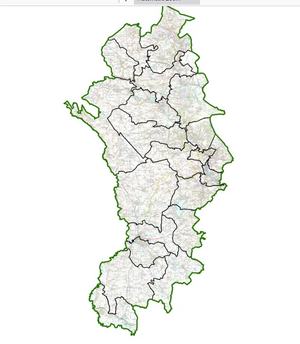Lib Dem Boundary Suggestions Accepted by LGBCE

Most (but not all) of the suggestions made in the Derbyshire Dales Lib Dems submission to the Local Governement Boundary Commission for England (LGBCE) have been accepted.
In the Final LGBCE report published yesterday we have in the recommendations a warding arrangement that does broadly follow what we put forward in our very first submission over a year ago in October 2020.
Overall the new warding is probably best described as a sensible compromise, since the entire exercise of reducing the number of District Councillors from 39 to 34 was an unnecessarily complicated process based on flawed assumptions about cost saving and work load.
We can however reflect that the worst defects of some of the previous suggestions from LGBCE have been avoided due to the persistent submission of reasoned argument from local Lib Dems.
Key Features of the mew scheme
Matlock retains its two 3 councillor wards with Matlock West (previously Matlock All Saints) expanding to include the Morledge estate and the parish ward of Oaker and Snitterton (although the boundary on the LGBCE map appears t odds with the existing parish ward boundary). Matlock East (previously Matlock St Giles) retains its existing boundaries, including Tansley.
Ashbourne South now includes the parishes of Clifton and Compton, Edlaston and Wyaston, and Osmaston. It will have 3 councillors rather than the present 2. This ward is currently the most 'under-represented' ward in the Derbyshire Dales in terms of councillors per resident.
Ashbourne North expands to include Mappleton, Bradley and Atlow but remains with just 2 councillors.
Wirksworth similarly expands to include Callow, Carsington and Hopton parishes and retains its 3 councillors.
The previously over-represented Bakewell ward will have two rather than three councillors and many wards will disappear completely as their component parishes are allocated into the larger groupings that are an inevitable consequence of the reduction in the total number of District Councillors from 39 to 34.
Full details are in the report from LGBCE with more details on the LGBCE website
